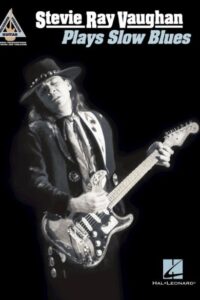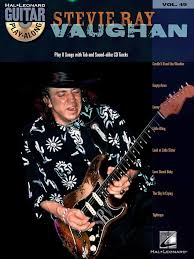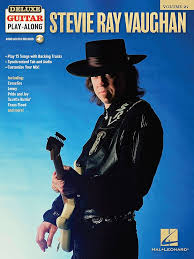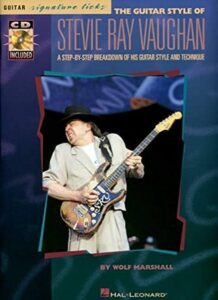Happy heavenly birthday, Stevie Ray Vaughan, #botd in 1954.
Come join us now, and enjoy playing your beloved music and browse through great scores of every level and styles!
Can’t find the songbook you’re looking for? Please, email us at: sheetmusiclibrarypdf@gmail.com We’d like to help you!
Table of Contents

Stevie Ray Vaughan – Texas Flood (Live at the El Mocambo)
“Texas Flood (Live at the El Mocambo)” by Stevie Ray Vaughan.

Best Sheet Music download from our Library.
Please, subscribe to our Library.
If you are already a subscriber, please, check our NEW SCORES’ page every month for new sheet music. THANK YOU!

Browse in the Library:
Or browse in the categories menus & download the Library Catalog PDF:
Of all the names etched into the pantheon of guitar gods, few burn with the raw, incandescent passion of Stevie Ray Vaughan. He was a force of nature, a Texan hurricane who, for a brief, brilliant decade, single-handedly resurrected the blues from a state of reverence to one of raging, contemporary relevance. He wasn’t just a custodian of the past; he was a conduit, channeling the spirits of Albert King, Jimi Hendrix, and Lonnie Mack through a virtuosic technique and a soul-deep feel that could make your heart ache and your spirit soar in the same solo. This is the exhaustive story of Stevie Ray Vaughan: his life, his sound, his genius, and his enduring legacy.
Biography: A Texas Flood
Early Years (1954-1981)
Stevie Ray Vaughan was born on October 3, 1954, in Dallas, Texas. His older brother, Jimmie Vaughan, was his first and most crucial influence. While Stevie initially dabbled with drums and then bass, it was the sight of Jimmie mastering the guitar that set his own path ablaze. He received his first guitar, a hand-me-down from Jimmie, at age ten, and his obsession began.
He devoured the blues records his brother shared—artists like Muddy Waters, B.B. King, and Albert King. Albert King’s string-bending style, in particular, became a foundational pillar of Stevie’s own technique. He was a high school dropout, but his education was happening in the bars and clubs of Austin, where he earned his stripes in bands like The Cobras and later, Triple Threat Revue. It was from the ashes of Triple Threat that he formed Double Trouble in 1978, named after an Otis Rush song, with bassist Tommy Shannon (who had previously played with Johnny Winter) and drummer Chris Layton.
For years, they were the kings of the Austin scene, a well-kept secret known for their explosive, marathon live sets. The break came at the Montreux Jazz Festival in 1982. Invited to play the acoustic-blues-steeped event, Double Trouble’s electric fury was initially met with boos from a purist contingent, but it also attracted the attention of two rock and roll legends: David Bowie and Jackson Browne. Bowie asked Vaughan to play on his upcoming album, while Browne offered his Los Angeles studio for free.
Rise to Stardom and Descent (1983-1986)
The session with Bowie resulted in the searing solo on “Let’s Dance,” a track that became a global smash. This exposure was invaluable, but Stevie, fiercely loyal to his own music, turned down a lucrative tour offer with Bowie to focus on Double Trouble.
The band used Browne’s studio to cut the demos that would become “Texas Flood.” Released in 1983, it was a thunderclap. In an era dominated by synth-pop and hair metal, the album’s raw, unapologetic power was a revelation. Tracks like “Pride and Joy,” “Love Struck Baby,” and the title track “Texas Flood” were instant classics. Vaughan was suddenly a star, earning a Grammy nomination and gracing the cover of Guitar Player magazine.
The follow-ups, “Couldn’t Stand the Weather” (1984) and “Soul to Soul” (1985), solidified his status. He expanded his sound, incorporating elements of jazz and rock, and delivering iconic covers like Jimi Hendrix’s “Voodoo Child (Slight Return)” and “Little Wing.” However, the relentless pace of touring and recording, coupled with a deep-seated insecurity, fueled a vicious cycle of drug and alcohol abuse. By 1986, he was a shadow of himself—physically frail, emotionally volatile, and nearing collapse. His performance at the Live Aid concert that year was a public low point, a disjointed and painful spectacle.
Recovery and Triumph (1986-1990)
After a near-fatal overdose in Europe, Vaughan finally accepted help. He checked himself into a rehabilitation clinic in Atlanta, emerging months later sober, clear-eyed, and reborn. His first album post-rehab, “In Step” (1989), was a testament to his recovery. The title referenced his 12-step program, and the lyrics were brutally honest about his past struggles. Musically, it was his most polished and powerful work, featuring masterpieces like “The House is Rockin’,” “Crossfire,” and the beautiful instrumental, “Riviera Paradise.” It won the Grammy for Best Contemporary Blues Album.
He reconciled with his brother Jimmie, and they recorded the glorious “Family Style” album as The Vaughan Brothers. The music was joyous, funky, and infused with a new sense of creative freedom. The future seemed limitless.
Tragic End (1990)
On August 26, 1990, after a triumphant sold-out show with Double Trouble and Jimmie in East Troy, Wisconsin, Stevie Ray Vaughan boarded a helicopter to avoid a traffic-jammed post-concert drive. The helicopter crashed into a ski hill shortly after takeoff, killing Vaughan and four others instantly. He was 35 years old. The music world was plunged into mourning. The blues had lost its brightest modern torchbearer.
Music Style and Guitar Mastery
Stevie Ray Vaughan’s style was a Molotov cocktail of influences, shaken and thrown with ferocious intensity.
The Sound and the Technique:
- The “Number One” Stratocaster: His primary guitar was a battered 1959 Fender Stratocaster, famously nicknamed “Number One” or “First Wife.” It was fitted with heavy-gauge strings (.013-.058), tuned a half-step down (Eb Ab Db Gb Bb Eb), which gave his sound a thicker, warmer, and more vocal-like quality.
- The Attack: He played with an immense physicality, digging into the strings with his fingers and a heavy pick. His vibrato was wide, aching, and controlled, a direct inheritance from Albert King.
- Rhythmic Virtuosity: His rhythm playing was as masterful as his lead. He mixed complex, jazz-influenced chord voicings with driving, percussive rhythms, often using a “double-stop” technique (playing two strings simultaneously) to create a full, piano-like texture.
- Tone: His tone was colossal. Running through a combination of vintage Fender and Dumble amplifiers, often with a Ibanez Tube Screamer as a boost, he achieved a sound that was clean and articulate at its core but would explode into singing, violin-like sustain when he dug in.

Improvisational Licks and Riffs:
Vaughan’s improvisational language was a vocabulary built from the blues, but spoken with a unique accent.
- Pentatonic Mastery with Chromatic Passing Tones: He lived in the minor pentatonic and blues scales, but he constantly peppered his lines with chromatic notes (the notes between the scale tones) to create tension and a sense of urgency. A run like this from “Pride and Joy” is a classic example, weaving around the root note with bluesy grace.
- The Albert King Box: He heavily utilized the “Albert King box,” a specific five-note pattern on the neck that allowed for his signature wide, vocal bends. He would often bend strings with multiple fingers for maximum control and power, hitting notes with a soulful precision that felt like crying.
- Hendrix-isms: He absorbed Jimi Hendrix’s textural innovations. This included using the wah-wah pedal not as a filter, but as a tone-shaping tool (as on “Scuttle Buttin’”), employing unison bends (bending one string to match the pitch of another), and incorporating radical whammy bar dives and harmonic squeals.
- Rhythmic Displacement: He was a master of starting a phrase on an unexpected beat, creating a syncopated, push-and-pull feel that made his solos feel less like exercises and more like spontaneous conversations.
Chord Progressions and Music Harmony:
While firmly rooted in the standard 12-bar and 8-bar blues forms (I-IV-V progressions), Vaughan was not a harmonic minimalist.
- Jazz Influence: He loved using extended chords—9ths, 13ths, and minor 7ths—to add color and sophistication. “Lenny,” a beautiful instrumental dedicated to his wife, is a masterclass in this, moving through complex, jazzy changes with a tender, lyrical feel.
- Modal Shifts: In “Riviera Paradise,” he moves beyond the blues entirely, crafting a serene, almost spiritual piece based on a Dorian mode, showcasing his evolving musical mind.
- Turnarounds and Intros: His intros were often compositions in themselves. The intro to “Texas Flood” is a legendary, rubato statement that sets a dramatic scene before the rhythm section kicks in.
Influences and Legacy
Influences: The Holy Trinity for Vaughan was Albert King (bending, phrasing), Jimi Hendrix (texture, freedom, showmanship), and Lonnie Mack (speed, melodic sensibility). He also deeply admired and incorporated elements from Buddy Guy, Otis Rush, Kenny Burrell, and Wes Montgomery.
Legacy: Stevie Ray Vaughan’s impact is immeasurable.
- The Blues Revival: He made the blues cool again. In his wake, a new generation of guitarists picked up Stratocasters, and record labels began signing blues artists.
- The “SRV” Sound: He created a specific, instantly recognizable guitar tone that became the benchmark for modern blues-rock.
- Technical Standard: He set a new bar for technical proficiency in blues guitar, combining speed, precision, and deep emotion in a way few have matched.
- Inspiration: Countless guitarists, from John Mayer and Kenny Wayne Shepherd to Mike McCready and Gary Clark Jr., cite him as a primary influence. He remains a touchstone for anyone seeking to play with raw feeling and virtuosic command.
Cooperation with Other Artists
While Double Trouble was his home, his collaborations were significant:
- David Bowie: The “Let’s Dance” solo is a masterstroke of minimalist power, proving Vaughan could elevate a pop song into something monumental.
- John Lee Hooker: He played on Hooker’s album “The Healer” on the track “The Healer,” a meeting of blues generations.
- Lonnie Mack: He produced and played on Mack’s 1985 comeback album “Strike Like Lightning,” a tribute to one of his heroes.
- Albert King: Their jam on “Call It Stormy Monday” from the “In Session” TV show is one of the greatest guitar duels ever recorded, a respectful but fiery passing of the torch.
- The Vaughan Brothers: His collaboration with Jimmie on “Family Style” was a creative peak, blending their styles into a unique and joyous sound.
Most Known Compositions and Performances
Signature Songs:
- “Pride and Joy”
- “Texas Flood”
- “Cold Shot”
- “The House is Rockin’”
- “Scuttle Buttin’”
- “Crossfire”
- “Lenny”
- “Riviera Paradise”
- “Life Without You”
Iconic Performances:
- “Texas Flood” at El Mocambo (1983): The filmed performance that introduced his ferocious live act to the world.
- “Voodoo Child (Slight Return)” at Live at the MTV Awards (1985): A performance of almost supernatural intensity.
- “Rude Mood” at the 1982 Montreux Jazz Festival: The instrumental that drew boos and cheers, and ultimately, changed his life.
- “Little Wing” at the 1989 “Austin City Limits”: A breathtakingly beautiful and faithful tribute to Hendrix.
- The entire “Live at Carnegie Hall” (1984) concert: A historic night where he was joined by his brother Jimmie, Dr. John, and the Roomful of Blues horn section.
Discography
Studio Albums with Double Trouble:
- Texas Flood (1983)
- Couldn’t Stand the Weather (1984)
- Soul to Soul (1985) – featuring new member Reese Wynans on keyboards.
- In Step (1989)
Posthumous and Collaborative Releases:
- Family Style (with Jimmie Vaughan, as The Vaughan Brothers) (1990)
- The Sky Is Crying (1991) – A compilation of studio outtakes that won a Grammy.
- In the Beginning (1992) – Early studio recordings from 1980.
- Live at Carnegie Hall (1997)
- Blues at Sunrise (2000)
- The Real Deal: Greatest Hits Volume 2 (1999)
- Solos, Sessions & Encores (2007)
Filmography
While Vaughan never starred in a film, his performances are preserved in several essential releases:
- Live at the El Mocambo (1983/1991): The definitive early live document.
- Live from Austin, Texas (1983 & 1990): Two separate “Austin City Limits” performances, showcasing his evolution.
- Stevie Ray Vaughan and Double Trouble: Live at Montreux 1982 & 1985 (2004): Capturing both the controversial first performance and the triumphant return.
- SRV (2000): The comprehensive documentary featuring rare footage and interviews.
Stevie Ray Vaughan’s story is one of meteoric rise, devastating fall, and heroic redemption, cut short by a tragedy that still resonates. He was more than a guitarist; he was a musical evangelist who preached the gospel of the blues with unbridled passion and peerless skill. In his hands, the Fender Stratocaster was a voice that could whisper, shout, weep, and testify. His legacy is not just in the notes he played, but in the feeling he conveyed—a raw, honest, and powerful emotion that continues to ignite the souls of listeners and players around the world. He was, and forever will be, the fire and soul of the modern blues.
Stevie Ray Vaughan And Double Trouble In Step Full Album
In Step is a blues rock album by Stevie Ray Vaughan & Double Trouble released in 1989. The title can be seen as a reference to Vaughan’s newfound sobriety, following years of drugs and alcohol, which eventually led to rehab. It was also Vaughan’s last record with Double Trouble. In 1990 he recorded an album in collaboration with his brother, Jimmie Vaughan, called Family Style. He died that same year in a helicopter crash.
This is Stevie Ray Vaughan (on Spotify)
Browse in the Library:
Or browse in the categories menus & download the Library Catalog PDF:
